Argentina on Sale
By John Mauldin
March 13, 2013
Argentina: A Lesson in Chaos
Argentina on Sale
Why Don’t You Just Stop?
Can the US Experience Argentinean Inflation?
Webinar
The Andes, Sonoma, Manila, and Singapore
When I was younger, so much younger than today,
I never needed anybody’s help in any way.
But now these days are gone, I’m not so self assured,
Now I find I’ve changed my mind and opened up the doors.– John Lennon, the Beatles
(From Cafayate, Argentina) There are some who worry whether the path that Argentina has taken to monetary ruin on multiple occasions (and that it seems intent on taking again) is one that the US may also find itself on. That worry has crossed my mind a few times, I must confess. Today we will look at Argentina more in depth. From a monetary perspective, it deserves attention. And once again there will be opportunity.
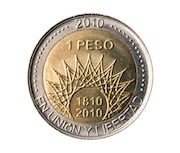
Let me jump right to the conclusion: Just as Spain is not Greece, because each chose a unique route to economic malaise, the US is not Argentina. We are perfectly capable of avoiding Argentina’s problems while cooking up ones that are all our own. But there are some worrisome and potentially instructive issues in Argentina.Argentina: A Lesson in Chaos
At the turn of the 20th century Argentina was one of the richest countries in the world, due primarily to its vast and fertile farmlands. In 1913, GDP per capita was about equal to those of France and Germany and close to that of the US. By 1950, though, Argentina’s GDP per capita wasn’t even half that of the United States. (You can read a short, graphic history of the economic chaos that has been Argentina from the 1930s on at http://en.wikipedia.org/wiki/Economic_history_of_Argentina.)
Currency values plummeted. Inflation reached 5,000% at one point in the 1970s. Prices increased by a factor of 20 billion from 1975-1991 – over 300% per year. In 1983, at the urging of the IMF, a new peso was introduced at a value of 10,000 to one of the old pesos. Ouch. And that was just the beginning!
The Peronist government of Menem, elected in 1989, made a deal with the IMF, which promptly collapsed, leading to a rapid 12,000% inflation. On January 1, 1992, a new monetary reform replaced the austral (the name of the currency at that time) with the new peso at a rate of 10,000 australs for one peso. Another 10,000-fold devaluation – twice within ten years! The peso was now fixed to the dollar.
The following chart shows the value of the peso in dollar terms since 1936. The numbers are in German, which makes the chart just too ironic not to use. Note that each one of the horizontal bars represents a devaluation of 90%! (The vertical axis is a log-10 scale.)
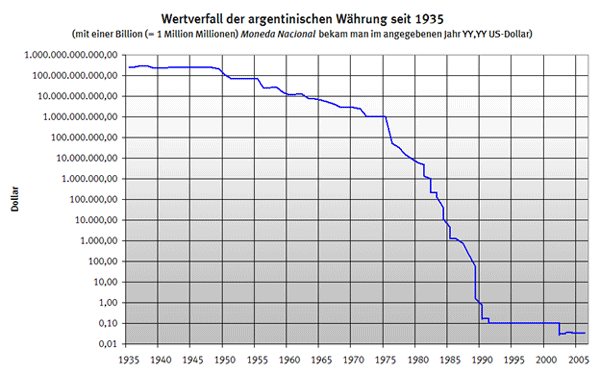
I first came to Argentina in 1993. The country had just emerged from economic chaos. Real per capita income had dropped by 20% in the previous 20 years. But even with the chaos, the restaurants were busy at 10 PM, when Argentines like to eat!
Over the succeeding years, with a fixed dollar exchange rate, some industries could not compete and trade deficits grew. As in Greece today, the only way to create a fiscal balance was labor-price devaluation, which was decidedly unpopular. So Argentina went off the dollar standard, and the value of the peso dropped by 50%.
In December 1999 Fernando de la Rúa was inaugurated President, seeking assistance from the IMF shortly thereafter. In March 2000, the IMF agreed to a three-year $7.2 billion stand-by arrangement with Argentina, conditioned on a strict fiscal adjustment and the assumption of 3.5% GDP growth in 2000 (actual growth was 0.5%). In late 2000, Argentina began to experience severely diminished access to capital markets, as reflected in a sharp and sustained rise in spreads on Argentine bonds over U.S. Treasuries. In December, the de la Rua government announced a $40 billion multilateral assistance package organized by IMF. The uneven implementation of fiscal adjustments and reforms, a worsening global macroeconomic environment, and political instability led to the complete loss of market access and intensified capital flight by the second quarter of 2001. Argentine debt, held mostly in bonds, was massively sold short and the government found itself unable to borrow or meet debt payments. [Shades of later Greece!]
In December 2001, a series of deposit runs began to have a severe impact on the health of the banking system, leading the Argentine authorities to impose a partial deposit freeze. With Argentina no longer in compliance with the conditions of the expanded IMF-supported program, the IMF decided to suspend disbursements. At the end of December, in a climate of severe political and social unrest, the country partially defaulted on its international obligations; in January 2002, it formally abandoned the convertibility regime. (Wikipedia)
The economic and political crisis that followed was arguably the worst since the country gained its independence from Spain in 1816. By the end of 2002, the economy had contracted 20% since 1998.Over the course of two years, output fell by more than 15%, the Argentine peso lost three-quarters of its value, and registered unemployment grew to 25%. Income poverty in Argentina grew from an already high 35.4% in October 2001 to a peak of 54.3% in October 2002.
My friend and Uruguayan business partner Enrique Fynn tells stories of coming to Buenos Aires and hearing new prices being announced hour by hour over a public address system in a grocery store. He had dollars, which bought him lots of goods to take back on the ferry.. People who were prescient and had money were able to buy apartments in BA and land in Argentina at what can only be called fire-sale prices.
I remember coming to Argentina about three years ago. I thought prices in Buenos Aires were high – the peso was about 3.50 to the dollar. When I visited again last November, prices were “reasonable” by my travel standards, and here in Cafayate I found good value. I have friends who are building homes here much more cheaply than they could in the US. And the quality is high; there are some real craftsmen here. Their stonework is exquisite.
I was in Buenos Aires last Friday. The official exchange rate is now 5.50 pesos to the dollar. The street price is 7.75, on its way to 8. But the largest bill is a 100-peso note, which is now worth less than $13. Using a credit card costs at least an extra 10%, if not 20%; but the prices you are quoted for using a credit card instead of cash are higher to start with, before the surcharge, so using a card ends up costing you about an extra 40%. But you need to carry a lot of cash if you want to buy anything expensive. (Be very careful if you do not know your way around. I am told there are lots of counterfeit bills passed off on tourists. Not that I exchanged anything, of course this is all theoretical, for illustration purposes.)
I was staying in the Recoleta area, which is one of the most expensive areas of the city and a wonderful place to while away a day or two.
But things were cheap. A simple lunch for two on a fashionable street was around $15. We had a fabulous meal at a restaurant we stumbled on, called Sirop Folie. (I will go again!) It would have been $150 at a comparable place in Dallas or NYC (or Europe), but it cost us just $50, including tip. I left my computer mouse in Dallas but was able to pick one up for $6. Vegetables and cheeses were around half what I am used to paying in Dallas. I began to “shop” in order to look at prices. By US standards, Argentina is on sale. And this was in the high-rent district.
On the way to Cafayate, there were signs on the road for chicken dinners for the local trade priced at $2 equivalent. Our dinner last night for two was less than $40 (all in) at what is considered one of the better local restaurants, Vinas de Cafayate (fabulous menu!). The place was packed by 10 pm, as I was leaving. So Argentina seems inexpensive today. Not a definitive study, admittedly, but the trend is clear.
President Kirchner is again experimenting with price controls. (Peron infamously tried to control even restaurant menu prices in the late 1940s – you’d think he would have known better). The last time price controls failed was in 2005. Now, Argentina has limited beef exports in the futile hope that doing so will drive down beef costs. All that has happened is that cattle herds have been reduced and exports are down. Similar export controls to try to keep bread prices down have seen wheat production fall.
Brazil has seen its cattle exports explode in 20 years, while Argentina’s have not grown at all as the government tries to control production and export prices. Argentina used to be the world’s largest beef exporter, but Brazil now has a herd almost four times the size of Argentina’s. How many jobs have been lost to Brazil? One long-time exporter says, “There are developed countries, emerging countries, and then there’s Argentina.
Want to see something sad? An illustration of what governments can do to an industry by trying to control it? Look at this chart. Argentina is now down at #11. Tiny neighbor Uruguay exports twice the beef and veal.
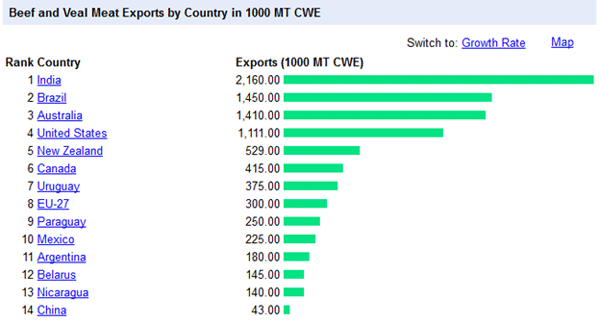
The government is committed to a path of monetization. Inflation is denied by government statisticians, but it is at about 30% and rising. While the government is putting pressure on grocers to maintain prices, which always leads to shortages, as of this morning you can still find anything you want at the local equivalent of a well-stocked Hypermart.
I sat down for what became a lengthy conversation with Juan Carlos Romero, the current senator from Salta Province. Juan Carlos is my age (which is to say a young 60ish) and is the very image of as an old-style patron, straight from central casting. He was governor of the province from 1995 to 2007 (it’s the family business – his father was governor, too) and has been vice-president of the senate and on a national presidential ticket. He is a very successful businessman. We met last time I was here, and I hit it off with both him and his son, Juan Sebastian.
I related to him my surprise at prices and inflation. The last time I was in the Recoleta, in November, there was a protest march (quite peaceful and civilized, if enthusiastic and noisy) of some 700,000 people in the center of town, along 9 de Julio Avenue, which is the widest avenue in the world. It is impressive to walk down.
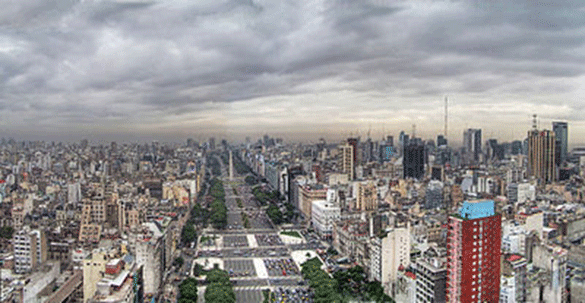
But things have only gotten worse since then. “Haven’t you seen this movie before?” I asked. “Don’t you know how this ends? What part of seeming insanity do you keep wanting to repeat? Why can’t you stop it?” I will summarize Juan Carlos’s answers from the notes I took.
Argentines don’t want to hear bad news (does anyone?). Monti gave the Italians bad news, and he only got 9% of the vote. The bureaucracy is out of control in Argentina, and it just keeps growing and creating costs. There are too many subsidies to certain businesses. And, as a result of votes during the last crisis, power is now concentrated in the presidency and a few key positions. There are not the checks and balances we are used to between branches of government in the States. Both major parties voted to nationalize pensions. Government benefits and subsidies are given to a large number of people, who then vote for more government benefits.
“In Argentina, we have the ability to make the same mistake many times, and nothing happens to change things. Why? Because there is a pervasive belief that the state can provide all that people need: jobs, welfare, everything.” Perhaps, he mused quietly, that attitude is a heritage from colonial days, when the King of Spain controlled the country and power and privilege and benefits came from the King.
Aerolineas loses $2 million a day, but people believe it is better than a private company. The government is not seen as something owned by the people but as something that exists to solve problems and take care of the people. Both parties and a majority of voters seem to agree that government is better than the private sector. Some sectors have few controls, and others are tightly controlled.
“Even so,” I asked, “can’t those in control see that inflation is bad?” The problem, he explained, is that those who have the ear of the president see inflation as a way to growth and thus a good thing. Those in power deny there is inflation and think it is caused by “commercial” interests that selfishly raise prices. Kirchner and those around her actually believe that their current policies will work. Meanwhile, 42% of GDP is government expenditures.
In a country of vast lands and unsurpassed beauty, more than half the people live in one city, Buenos Aires. (I think they all try and get out on the roads when I am going to or from the airport.) And that urban power base is central to Kirchner’s control – she won the last election handily.
As I walked through the Recoleta, I thought I saw stress on the faces of the people I encountered. You can talk to businesspeople and sense the stress.
How do you cope with such repeated episodes of chaos? Argentines who have money keep it outside the country. As one person told me, “In America, you buy gold to protect yourselves. We buy dollars.” The national sport – second only to fútbol – is tax evasion. (They come by both naturally, as about 60% of the population has Italian ancestors.)
And yet there is a thriving business community. The skyline is much more impressive in BA than it was 20 years ago. Argentines are an educated people. And things can and do get done.
Jon Malinski is a Minnesota businessman. He invested in a vineyard in Mendoza and recently bought a vineyard here in Cafayate, in one of the better growing regions. Two years ago, he broke ground on a massive, sophisticated, modern winery here. It is now open for business. He hosted a dinner on my first night here (accompanied by a huge lightning display back up in the mountains).
I have been to a few wineries in my time. This one was rivaled in elegance by only a few in the Napa Valley or France and the Ferragamo estate in Italy. Note: He bought the land and decided to build, and the winery was completed in two years. In the US, for an undertaking this large, you can’t even get the approval process underway in two years. One of Jon’s competitors told me he probably spent $20 million. For all the Argentinean government controls, in certain sectors you are free to do what you want.
This region is booming. Building is going on everywhere. People smile on the streets and are patient with your mangled attempts at Spanish.
There is a rather amazing contrast between the macroeconomic situation of the country and life on the street. Soon, the peso will once again come to be seen as a medium that will only be usable in immediate exchanges. Unless something is done, Argentina is going to repeat its past. Unlike Germany, which still remembers the Weimar hyperinflation, Argentina just seems to shrug off its past. The economy has recently survived on a boom in soybeans, but there is not much else to rely upon.
Argentina is on sale. I think prices relative to the dollar will rise. This is one sale where the last day is not yet known. Think about coming down here next fall and enjoying the time with me.
Can the US Experience Argentinean Inflation?
I know some readers think the worst of the Fed, and I am not a fan in general (and am opposed to the current QE policy), but I simply can’t conceive of the FOMC voting to monetize if inflation tops 10% again. I think there would be serious efforts to curb QE (monetization) at 5-6% inflation, although until we reach that level I think it will be tolerated. With higher inflation than that, voters would simply rebel. Think the ’70s: both Ford and Carter lost in part because of the economy and inflation.
In theory, any country can experience Argentinean-style inflation. It just takes a printing press (which today simply involves pushing some electrons around), a willing central bank, and a complicit citizenry. US citizens have an inherent distrust of government, although I admit that is slowly changing. Two factoids:
- Nearly a quarter of the voters in the last presidential election were single women, and they voted 2:1 for Obama and thus a larger role for government. (Guardian) Romney won married women voters by a significant amount, but the singles went to Obama, and they are the fastest-growing voter group. Government is increasingly being seen in certain circles as a provider of benefits and support, both for healthcare and as a general safety net. Growing economic malaise and rising healthcare costs only fuel this trend.
- And government is expanding the list of people who get direct benefits. Food stamps now go to almost 49 million people. Eleven states have welfare benefits that are higher than the minimum wage. And look at this chart on the growth of disability payments. Over half the recent rise above trend in disability benefits is for the treatment of mental disability and stress.
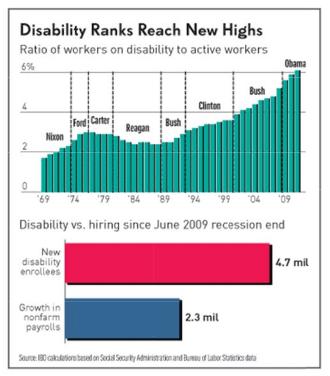
“How,” I had asked Juan Carlos, “can you let it happen?” But how, indeed, can we?
If you are a qualified purchaser or a FINRA licensed advisor, please join me and my partners at Altegris for an exclusive Mauldin Circle webinar on Tuesday, March 26 at 12:00 pm EDT/9:00 am PDT. Listen in as I interview Jacob Gottlieb, CIO of Visium Asset Management, a premiere long/short multi-strategy fund manager. We will learn more about Visiums’ unique investment approach and how they’re finding alpha opportunities in the current environment – both on the long and short side. Visium Asset Management is a firm that I follow closely, and I know you will find our discussion timely.
If you are a Mauldin Circle member and a qualified purchaser or an investment advisor, a webinar invitation will be sent directly to you by email. A replay will also be available to qualified registrants. If you are unable to listen in to the live discussion, be sure to register so that you can receive the replay information. If you are not a member of the Mauldin Circle and are a qualified purchaser, please join today. Upon qualification by my partners at Altegris, you will receive an email invitation . I apologize for limiting this discussion to qualified purchasers and investment advisors, but we must follow the rules and regulations. I look forward to having you at this exclusive Mauldin Circle event. (In this regard, I am president and a registered representative of Millenium Wave Securities, LLC, member FINRA.)
The Andes, Sonoma, Manila, and Singapore
Tomorrow I venture off with Doug Casey, David Galland, and Olivier Garret to Bill Bonner’s hacienda at Guafin, a few hours from here. A few years back, Bill bought this enormous (200,000-acre) ranch of mostly worthless land some 8,000 feet above sea level, but with magnificent views of the Andes, and he sneaks off there every now and then. I have been to his place in Ouzilly, France (a little easier to get to!) on several occasions, but this one sounds like a real fixer upper. Buying places that need lots of work seems to be his personal addiction (otherwise known as an expensive hobby), but it is a socially acceptable one and fun for his friends who drop in on him. I have known Bill for 30 years, since we were both young and starting out in the writing and publishing business. He has been a huge success, while I am hoping to be a late bloomer. But I have never had a moment with him that was not enjoyable, and most were thought-provoking. He does make me think.
He is one of my favorite writers in the business. I have often said that I feel like a house painter in front of a Rembrandt when I read Bill’s musings. Actually, he is more than just a writer; he is a consummate storyteller, a raconteur worthy of the name. I am looking forward to magnificent vistas and a new adventure but also to great conversations with old friends – war horses who have seen lots of battles but are not yet ready to be put out to pasture.
I will be speaking at a special one-day event in Sonoma, California, on April 5. My friend Mike Shedlock is holding a charity fundraiser to support research into ALS (Lou Gehrig’s disease. You can find out more at Mish’s Conference.
My own conference (co-sponsored with Altegris Investments) is May 1-3. It is filling up rapidly. The line-up of speakers is the best I have seen anywhere this year. We offer an early-bird registration, which is about to run out. Because of security regulations, we do have to limit attendance to accredited investors and those in the securities/investment business. You can start the process by going to the Strategic Investment Conference page. I hope to see you there.
I will be in Singapore for a speech April 18-19. I was going to go to Cambodia and Angkor Wat, but it is their New Year, so I will postpone that trip till the next Asia speaking trip and see Manila instead, where I have some old friends and have never been. I then hop back to San Francisco for a speech for the National Association of Surety Bond Producers (NASBP) on April 22.
Some final thoughts on Cafayate. This is just a hopping little town with a magnificent vista. Perfect climate in the tropics but at 5,000 feet. The mountains change color throughout the day. My friends have built a first-class resort. The spa is truly world-class, there is a great gym, and a massage will run you about $40. The golf course is the longest one in South America, which means there is more room for me to lose balls. There are very good to great places to eat. I am not one for road trips, but the drive through the canyon to get here is stunning, well worth a few hours’ diversion.
The people who seem to collect here are about as eclectic as you can get. Nearly everyone has great stories to regale you with. And they are just generally nice people. This is going to be quite the community. I will plan to be here more, but when I am, let’s see how much writing I actually get done.
Somehow, the memo that sequestration was supposed to be about austerity has gotten lost. There have been 2,600 new federal jobs posted since the introduction of the bill, 600 at Homeland Security, which was going cut workers, making lines longer at airports. I guess I am new to this off brand of austerity. But what do I know?
I know it is late, and I need a few hours’ sleep. Have a great week.
Your living for places and times like this analyst,John Mauldin


What's been said:
Discussions found on the web: